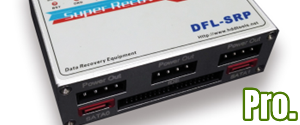What data recovery tools to buy if you want to start a data recovery business?
Free video data recovery training on how to recover lost data from different hard drives?
Where to buy head and platter replacement tools at good prices?
Data recover case studies step by step guide
I want to attend professional data recovery training courses
BUSINESS CONTINUITY: THE IMPORTANCE OF DATA AVAILABILITY TO BUSINESS OPERATIONS
Business continuity is the ability of a business to continue to operate in the face of disaster. All functional departments within a company are involved in business continuity. Facilities management needs to be able to provide alternative buildings for workers. Manufacturing needs to develop ways of shifting work to outsourcers, partners, or other factories to make up for lost capacity. Planning and execution of a business continuity plan is an executive-level function that takes into account all aspects of business operations.
Information technology plays a key role in maintaining operations when disaster strikes. For most modern companies to function properly, communications must be restored quickly. Phone systems and e-mail are especially important, because they are primary communications media and usually are brought online first. After that, different systems are restored, depending on the needs of the business.
Protecting data and the access to it is a primary component of business continuity strategies. Restoring systems whose data has been destroyed is useless. What is the point of restoring the financial system if all the financial data has disappeared? IT, like other departments, needs to ensure that the data entrusted to it survives. In many cases, it is less important that the hardware systems themselves survive, so long as critical data does. If the data is still intact, new hardware can be purchased, applications reloaded, and operations restored. It might be a slow process, and there will be financial ramifications, but at least the business will eventually return to normalcy. Without the data, that will never happen.
THE CHANGING FACE OF DATA PROTECTION
In the past, data protection meant tape backups. Some online protection could be obtained by using RAID (which is explained in Chapter 2) to keep data intact and available in the event of a hard drive failure. Most system administrators relied on copying data to tape and then moving some of those tapes offsite. This is still the most common form of data protection, but only part of a whole suite of techniques available for safeguarding data.
Remote Data Movement and Copy
It was natural to extend the paradigm of duplicating important data on another disk (RAID) to duplicating it to another storage system, perhaps located in a different place. In this process, called remote copy, exact copies of individual blocks of data are made to a remote system. This system might be right next door or hundreds of miles away. Remote copy allows a second storage system to act as a hot backup or to be placed out of harm’s way and available for the disaster-recovery site to use. At present, remote-copy systems tend to be expensive. The telecommunications needed to support them present the IT manager with a high recurring expense. The costs involved with remote copy have tended to relegate its use to high-end applications and very large companies.
Disk-Based Backup
Typically, backups consist of copying data from a disk system to a magnetic tape. Tape is, unfortunately, slow to write to, lacks the capacity that modern disks have, can be difficult to manage, and is very slow to recover data from. Because the purpose of a backup, as opposed to an archive, is to produce a copy of the data that can be restored if the primary data source is lost, slow recovery is a problem.
Because of these limitations, disk-based backups are gaining in popularity. Originally positioned as a replacement to tape, this method is seen as being part of a more sophisticated backup strategy. With disk-based backups, similar software and techniques are used as with tape, except that the target is a disk system. This technique has the advantage of being very fast relative to tape, especially for recovery. The disadvantages are that disk drives generally are not removable, and the data cannot be sent off-site the way a tape can.
Networked Storage
The biggest changes in data protection come courtesy of networked storage. In the past, storage was closely tied to individual servers. Now storage is more distributed, with many clients or servers able to access many storage units. This has been both positive and negative for data protection. On the one hand, networked storage makes certain techniques—such as remote copy, disk-based backup, and distributed data stores—much easier to implement and manage. The ability to share certain resources, such as tape libraries, allows for data protection schemes that do not disrupt operations.
However, the networked storage environment is much more complex to manage. There tend to be many more devices and paths to the data. Because one of the key advantages of networked storage is scalability, these systems tend to grow quickly. This growth can be difficult to manage, and the sheer number of devices in the storage system can be as daunting as other types of corporate networks.
Networked storage allows for multiple paths between the server or client and the data storage devices. Multiple paths work to enhance business continuity by making link failures less of a problem. There is less chance that a broken cable will cause applications and backups to fail. Overall, networked storage is more resilient. It produces an environment in which safeguarding data and recovering from failure are performed more quickly and efficiently.
Information Lifecycle Management
The future direction of data protection is in a recent concept called Information Lifecycle Management (ILM). ILM is less concerned about the underlying data than about the upper-level information. Information is data with context; that context is provided by metadata, or data about the data. ILM guides data protection by determining what type of protection should be applied to data, based on the value of the information it supports. It makes sense to spend a lot of money on remote copy for very valuable information. Other information may not be worth protecting at all. ILM helps determine which path to take in making those decisions.
KEY POINTS
* Data protection is the safeguarding of important data from destruction, alteration, or loss. It is achieved through a combination of technology, business processes, and best practices. Core components of a data protection strategy are backup and recovery, remote data movement, storage system security, and Information Lifecycle Management.
* Business drivers influencing data-loss strategies are fear of financial loss, the need to comply with regulations, attempts to maintain high productivity, and the need to meet ever-increasing customer demands.
* Risk is potential exposure to harm. An organization can be harmed when data is unrecoverable, applications fail as a result of data loss, or the time to recover data is unacceptable. The risk to a business manifests itself in lost sales, the inability to operate properly for some time, lawsuits and fines, and the effects of theft of critical information.
* Increased connectivity creates a risk multiplier. The more resources that can be affected by an event, the greater the potential harm.
* Business continuity strategies strive to keep businesses operating in the event of disaster. Data protection is a key component of business continuity.
* Data protection is changing. New practices and technologies include diskbased backup, networked storage, ILM, and remote data movement. These practices and technologies are providing system architects more options for protecting data.
Data recovery Salon welcomes your comments and share with us your ideas, suggestions and experience. Data recovery salon is dedicated in sharing the most useful data recovery information with our users and only if you are good at data recovery or related knowledge, please kindly drop us an email and we will publish your article here. We need to make data recovery Salon to be the most professional and free data recovery E-book online.







Comments are closed
Sorry, but you cannot leave a comment for this post.